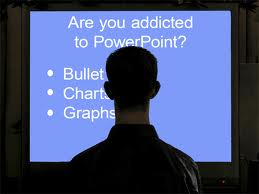Stagecraft
When you’re on stage to give a persuasive presentation, you have a lot of variables to manage. The postings in this category teach you how to come across as a comfortable, confident presenter.
When you’re on stage to give a persuasive presentation, you have a lot of variables to manage. The postings in this category teach you how to come across as a comfortable, confident presenter.
How many meanings does the following sentence have: What are you doing there?
The sentence has only five words but you can interpret it in at least five different ways. It’s very ambiguous. Your audience may interpret it in ways that you didn’t mean. It all depends on your tone of voice. You work on your speaking skills but how good are you at managing your tone of voice? Learn a useful exercise to improve your tone-of-voice control in today’s video.
You can deliver a superior presentation, but the audience will ultimately decide whether they trust you or not during the Q&A session. If they perceive that you’re answering all questions openly and honestly, you will earn their respect and trust. On the other hand, if you’re defensive or evasive, they’ll start to doubt everything you’ve said. (If he lied about this, what else would he lie about?) To handle the Q&A session effectively, you need to know the basic etiquette. Just watch the video.
What can we learn from James Bond movies? The Bond movies have plenty of visual entertainment — lots of things to catch your eye and keep your attention. Yet they also move very fast. In Quantum of Solace, the camera moved or the scene changed every 1.7 seconds on average. The lesson? Movement holds your attention. Now compare that to, say, 20 slides that you might use in an hour-long business presentation. That’s an average of three minutes each. Compared to what we’re used to in modern media, that’s slug speed. So, better to use more slides with less information per slide. Every time you click to a new slide, your audience’s attention returns. Better to click more frequently — especially in webinars where there’s nothing else to look at. Learn more in the video.
 Even if you’re a comfortable, confident presenter, poorly designed slides can ruin your presentation. Remember that you should be the center of attention; the slides are there to support you, not replace you. Complex, overly wordy slides will draw the attention away from you. The audience will look at the slides and not hear what you’re saying. The general rule is to simplify your slides until it hurts … and then simplify some more. As William James said, “The essence of wisdom is knowing what to leave out.” Learn how to prepare good, supportive slides in the video.
Even if you’re a comfortable, confident presenter, poorly designed slides can ruin your presentation. Remember that you should be the center of attention; the slides are there to support you, not replace you. Complex, overly wordy slides will draw the attention away from you. The audience will look at the slides and not hear what you’re saying. The general rule is to simplify your slides until it hurts … and then simplify some more. As William James said, “The essence of wisdom is knowing what to leave out.” Learn how to prepare good, supportive slides in the video.
When you’re speaking in public, your primary physical objective is to appear comfortable and confident on stage. Many coaches specializing in presentation training will give you very specific tips on how to use body language to your advantage, but the primary tip is to do whatever makes you feel Continue reading